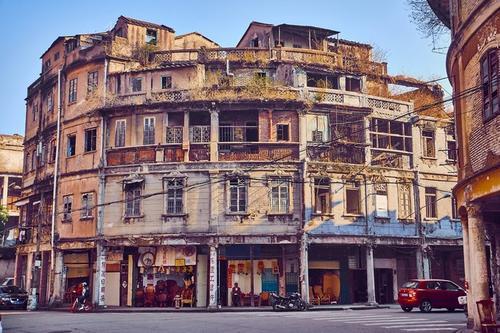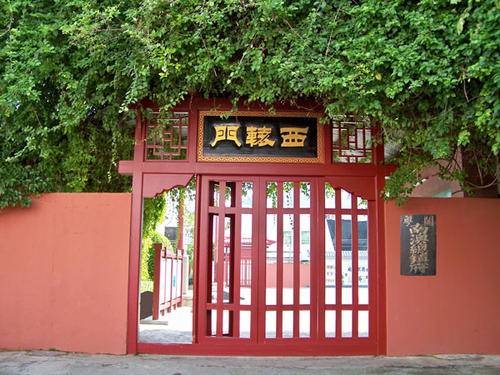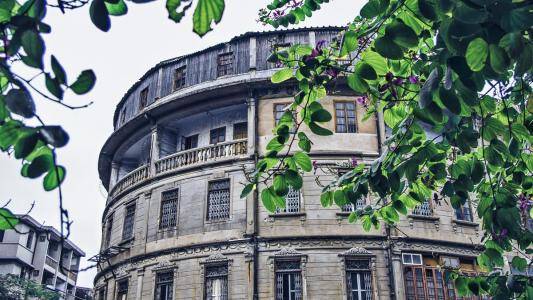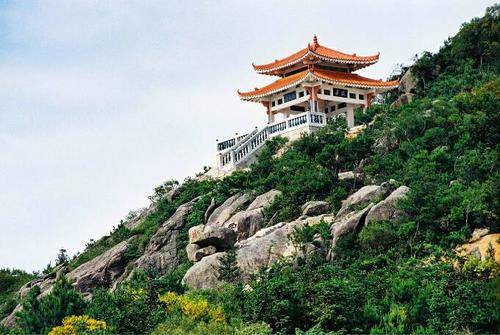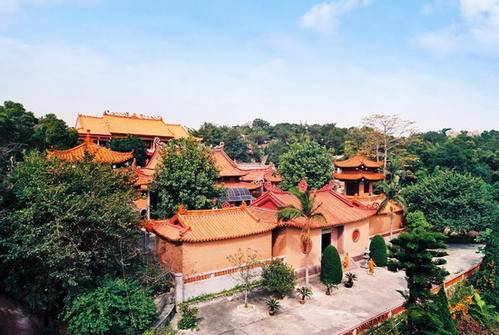Queshi Scenic Area
Queshi Scenic Area is located on the northern bank of the Rongjiang River in Haojiang District. The area is filled with unique peaks and strange rocks, complemented by the charm of the sea view, forming a scenic area where the natural scenery and cultural landscapes of Shantou complement each other. The terrain of the scenic area is mostly granite hills, with stunning scenery and cultural attractions such as the Baihua Temple.
Zongbing Mansion
Zongbing Mansion was the official residence of the Nanao Zongbing (regional commander) during the Ming and Qing dynasties. It was originally built in the fourth year of the Wanli period of the Ming Dynasty (1576) by Yan Jifang, the then deputy commander of Nanao. The current building was reconstructed in 1933. In front of the mansion, there are two preserved cannons weighing 8,000 and 6,000 jin respectively. It is the only island Zongbing Mansion in the country, rich in historical and cultural significance, and holds profound implications for cross-strait relations.
The only well-preserved miniature ancient city in the country, approximately the size of two football fields, with very thin city walls.
Laoma Palace
Laoma Palace is located at the end of Waima Road, also known as Tianhou Palace. It, along with the neighboring Guandi Temple, is one of the early buildings before the opening of Shantou port. Laoma Palace was built during the Jiaqing period of the Qing Dynasty and was renovated and reopened in 1992. Originally, this place was a coastal beach where local ships would set sail and Chaozhou people would go abroad. They would perform rituals and carry a bit of incense ash with them to show their longing for their hometown. Overseas Chaozhou people would also come here to pay their respects when they returned home, to express their remembrance of their ancestors.
Shantou Old Town
Located in the old district on the north bank of the Rongjiang River in Shantou City, Shantou Old Town stretches for 1 kilometer from the Xidi Wharf to the Waima Road intersection. This area is home to numerous buildings constructed in the early 20th century. The 'Qilou' arcades that provide shelter from the rain, the densely packed old-brand shops, the slightly cluttered streets, and the ancient decorative patterns near doors and windows all reveal the unique historical charm of Shantou Old Town.
Huanghua Mountain Forest Park
Huanghua Mountain Forest Park is the only national forest park on an island in China. Its main feature is the wild charm of the mountains and forests. Covering an area of 20,600 acres, the Tropic of Cancer runs through the middle of the park. Surrounded by the sea on three sides, the park boasts overlapping mountain ranges, lush forests, and unique rock formations. It is rich in natural resources and cultural landscapes. Popular attractions in Huanghua Mountain National Forest Park include: Jianshan Bathing Sun, Changshan Sunset, Guicheng Scenic Area, Cliff Inscriptions, Tunnel Exploration, Fengzhou Wangfu, Qianlai Garden, Anti-Japanese Memorial Hall, and the Former Site of the Educated Youth. The park is home to 1,440 species of tropical and subtropical plants from 102 families, including living plant fossils such as the bamboo cypress, and rare bonsai plants like the fine-leaved grape and boxwood. It also provides habitat for over 40 nationally protected wild animals, including the yellow-billed egret, python, and three-striped box turtle. Experts and scholars from home and abroad have praised it as the 'Natural Botanical Garden of the South China Sea.'
Jufeng Temple is a tourist attraction that integrates sightseeing, architectural appreciation, and religious worship. The ancient temple is hidden in dense mountains, offering serene and picturesque scenery, making it an ideal place for seclusion and self-cultivation. The temple's halls and pavilions are arranged in clusters with uniform layout and are magnificently decorated. The temple also features a plethora of rock murals and calligraphy by famous artists, which hold high artistic value.
